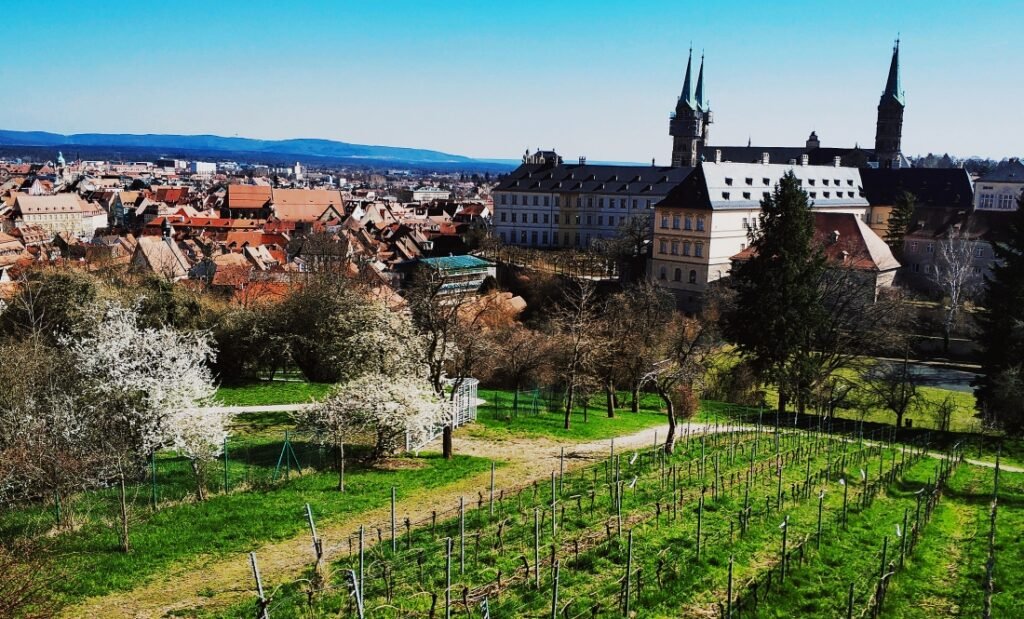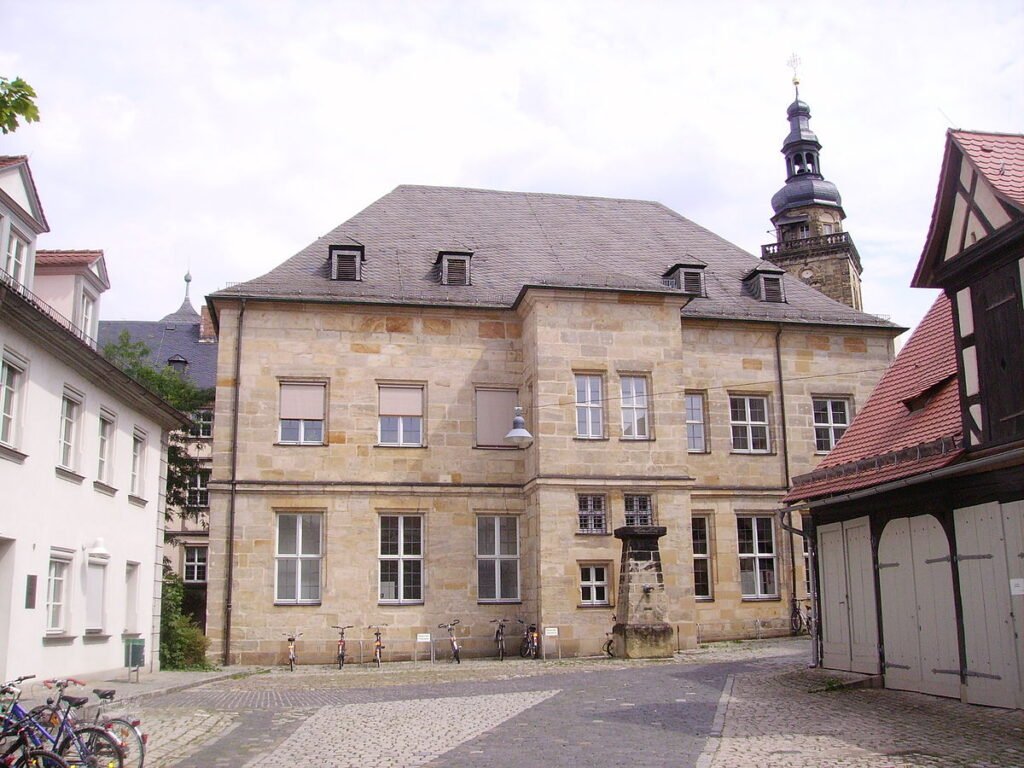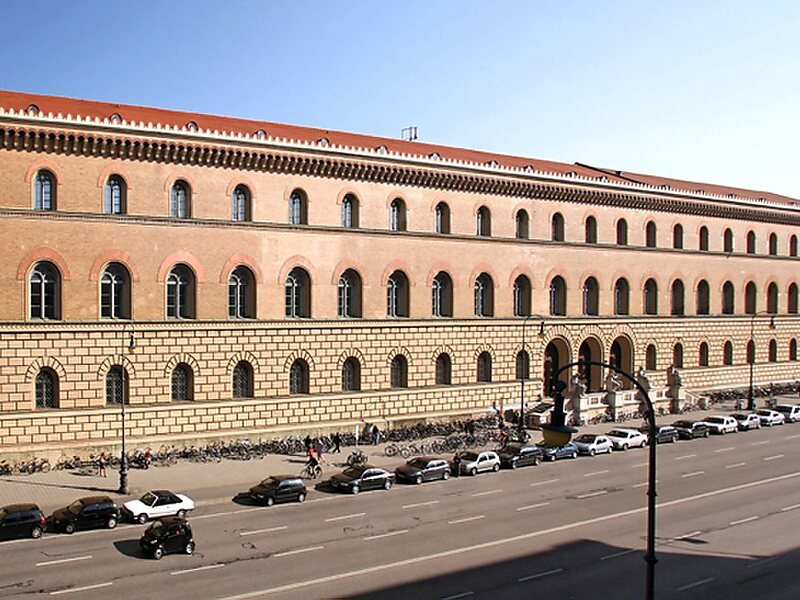Bamberg is a city with district rights in Germany, in the state of Bavaria, in the Upper Franconia region, seat of the Oberfranken-West region and the Bamberg district (to which it does not belong). It lies on the Regnitz river, which flows into the Main in two branches about 7 km from the city centre. Built on seven hills, Bamberg is often compared to Rome, with its mix of religious and administrative buildings dating back to the Middle Ages. And because Bamberg is located in Bavaria, it is also famous for its breweries and the distinctive local beer with a smoky flavor.

- Archcathedral of St. Peter and St. George (Romanesque-Gothic). It contains, among others, the sculpture of the Bamberg Rider (the first monumental equestrian statue since ancient times), the tomb of Pope Clement II, the altar of Veit Stoss. The Cathedral of Saints Peter and George in Bamberg – the main Catholic church of the city, with the status of a minor basilica, one of the seven historic imperial cathedrals, the seat of the Bamberg archbishopric. It is the only resting place of a pope (Clement II) north of the Alps. An important example of medieval 13th-century architecture, combining late Romanesque with early French Gothic. It contains, both outside and inside, numerous valuable works of medieval stone sculpture and woodcarving. Its characteristic silhouette with four towers, as well as the founders of the cathedral – Emperor Henry II the Saint and Empress Kunegunda of Luxembourg – have been featured in many paintings and graphics.

- The medieval old town in Bamberg is over 1,000 years old – at least some of the preserved buildings date back to that age.

- Located in Bavaria, Bamberg was a city of emperors and bishops, hence the rich forms of architecture. In 1007, Emperor Henry II founded a bishopric here. As early as the 11th century, a cathedral school was established at it. The teachers there were outstanding medieval humanists. In 1647, the school was renamed the Otto Academy, and in 1773, the University of Bamberg was founded on its basis, which operates to this day. Otto-Friedrich-Universität Bamberg – located in Bamberg, one of the oldest and most modern universities in Bavaria. Particular emphasis is placed on the humanities, cultural studies, economics and applied computer science.

- The Bamberg State Library is a universal, regional and research library, with a focus on the humanities. Today it is housed in the New Residence in Bamberg, the new palace of the former prince-bishops. The Free State of Bavaria is responsible for the library.

- Bamberg Ammunition Factory (“Muna”). During World War I, in 1917, the Bamberg Ammunition Factory (“Muna”) was built. During World War II, it was reactivated and expanded. In 1945, it was discovered along with 67 buildings, mostly bunkers full of ammunition. Each bunker had a storage capacity of 60 tons of explosives. In April 1945, 10 days after American forces entered Bamberg, the 2nd Platoon and 33rd Chemical Decontamination Company captured the ammunition factory. It was decided that the facility would remain under American administration.
- The city and the economy. Bamberg is an important railway and inland navigation junction (the beginning of the Rhine-Main-Danube Canal). The city has electrical, textile, shoe, tire, and brewing industries. Bamberg is home to the malt house Malzfabrik Michael Weyermann, known in Europe, and nine breweries. The most famous brewery is Heller, which brews smoked beer from smoked malt under the Schlenkerla brand. The Spezial brewery, which has been operating since 1536, is also worthy of attention.

Interesting facts about Poland. In 1121, Bishop Otto of Bamberg began a Christianization mission in Western Pomerania. Some German colonists settling in Greater Poland came from Bamberg and its surroundings – hence the name “bambrzy”.
